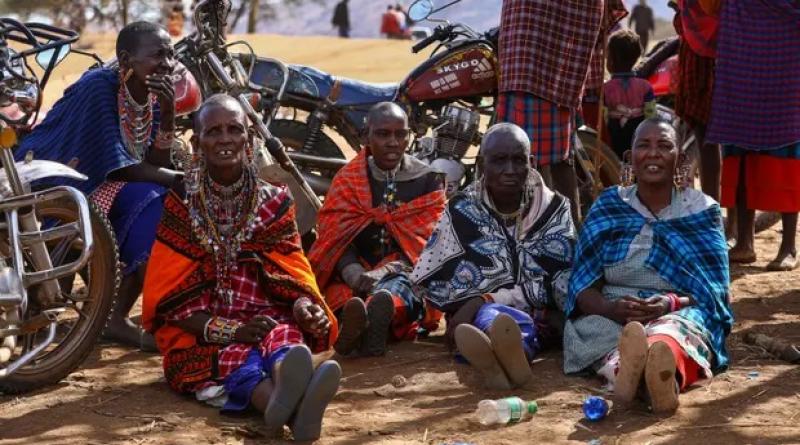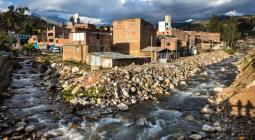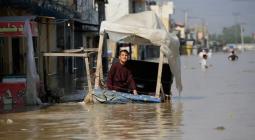African nations can’t ‘adapt’ to the climate crisis. Here’s what rich countries must do

37 million people are facing starvation in the Horn of Africa. Time for wealthier countries to adopt ‘loss and damage finance’
In September, I travelled from my home country, Uganda, to Turkana County in Kenya, which is suffering from a historic drought. One morning, I met a boy in a hospital where doctors see patients with the worst cases of severe acute malnutrition. His family had not been able to access the treatment he needed in time. By the time the sun set that evening, he had died.
The boy was one of 37 million people facing starvation in the Horn of Africa. After four failed rainy seasons, Kenya faces the acute risk of widespread famine. This suffering is set to get worse; experts predict that drought-stricken areas in Ethiopia, Kenya and Somalia will receive significantly below normal rainfall for the rest of the year.
The entire continent of Africa is responsible for less than 4% of historic global emissions, yet African people are bearing the brunt of the climate crisis. We are experiencing profound damage to our societies, our economies and most importantly our people. The same injustice is also crippling other lower-income parts of the world; in Pakistan earlier this year, extreme flooding submerged a third of the entire country, killing more than 1,700 people. The World Bank estimates that the total economic damage to Pakistan sits at over $30bn (£26bn); reconstruction will cost another $16bn.
Pakistan has contributed only 0.3% of global emissions, yet, like Kenya and Somalia, it is having to pay, literally, for the greenhouse gases released by other countries. What’s more, these countries don’t have the resources to pay for the damage being inflicted upon them. When Germany experienced terrible flooding in 2021, the government was able to instantly mobilise €30bn (£26bn) to pay to rebuild the towns and infrastructure that had been decimated by the flood. In contrast, Pakistan has had to rely on an UN emergency appeal that is only 34% funded. Mozambique was forced to take out an IMF loan to help pay for recovery following Cyclone Idai in 2019, pushing the country further into debt distress.
The legacy of colonial extraction and plundering by rich countries has left countries such as Pakistan, Kenya and Mozambique without enough resources to cope in the face of extreme climate change. Without the money to recover from extreme weather events, there is little hope for countries like mine to survive the next few decades.
At Cop27 this week, the countries most vulnerable to the effects of the climate crisis are bringing a solution to the table. We’re asking those who have largely caused this crisis to help pay for the damage they have created. This is called “loss and damage finance”, in UN language. Already, it has dominated the talks and kept negotiators wrangling late into the night.
Vanuatu, a Pacific nation that is among the most climate-vulnerable countries in the world, first proposed such financial support in 1991. But the issue has been tied down in technical UN negotiations for years. That has allowed rich countries to delay any progress in getting money to people who need it to recover and rebuild. Now, the issue of loss and damage is finally becoming unavoidable. People across the world are starting to understand why this is needed.
Some might say that such finance is still unlikely amid the energy and cost of living crises. But if we’re talking about who is to blame, there is one culprit that stands out – the fossil-fuel industry. A new report from the Loss and Damage Collaboration found that in the first half of 2022, just six fossil fuel companies made enough money to cover the total costs of extreme weather and climate-related events in developing countries around the world – and still have nearly $70bn (£61bn) left over in pure profit. Even the UN secretary general has called for windfall taxes on fossil-fuel giants to fund loss and damage payments.
Others argue that we cannot control how the money is actually used – that governments who receive it may not pass it on to the people in need and instead spend it on their own projects. But we know what works. A report released last week by the Stockholm Environment Institute found that the most effective way of getting this money to the people who need it is simply by giving them money directly. Such direct transfers could happen in the form of small and accessible grants to communities in urgent need.
The one thing that is still lacking is the political will to make this happen. But as climate disasters pile up, loss and damage is becoming increasingly difficult to ignore. People have described Cop27 as the “African Cop”. It can only live up to that name if world leaders are prepared to actually deal with the needs of people suffering from a crisis they have played little role in creating. To the leaders gathering in Sharm el-Sheikh this week, I say: you cannot adapt to starvation. Stop wasting time. Start getting funds to those who need them most.
-
Vanessa Nakate is a climate activist, Unicef goodwill ambassador and author of A Bigger Picture
COVER PHOTO: Maasai community members waiting for food aid during a drought in Kajiado, Kenya, 4 November 2022. Photograph: Daniel Irungu/EPA





